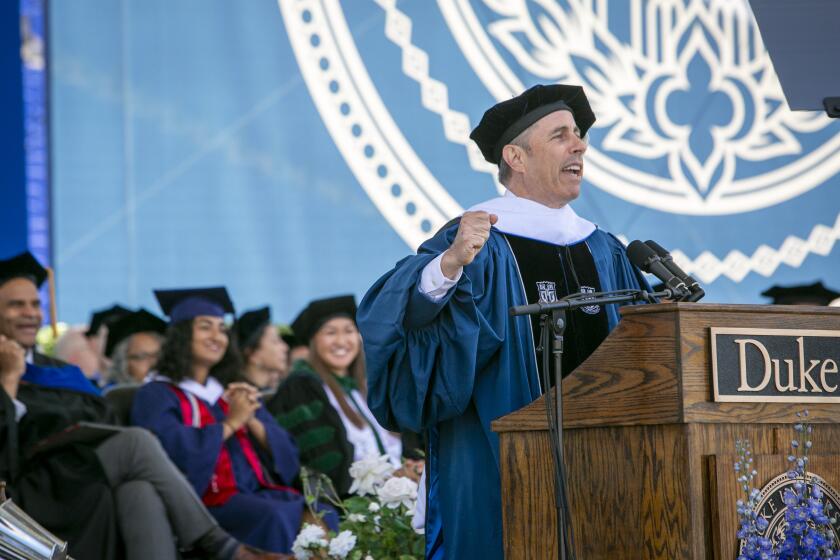Double exposure for leading lady of ‘La Otra’
When Dolores Del Rio, one of the screen’s legendary beauties, became dissatisfied with her Hollywood career, she returned to her native Mexico in 1943.
She began making a series of films with director Emilio Fernandez -- most notably “Maria Candelaria” in 1944 -- that became classics celebrating Mexican culture and folklore.
For the record:
12:00 a.m. July 9, 2004 For The Record
Los Angeles Times Friday July 09, 2004 Home Edition Main News Part A Page 2 National Desk 1 inches; 49 words Type of Material: Correction
“La Otra” screening -- A June 21 Calendar section Week Ahead article about a special screening at the Orpheum Theatre of “La Otra,” starring Dolores Del Rio, cited one of the organizations behind the event, the Los Angeles Conservancy, but omitted another, the Latin American Cinemateca of Los Angeles.
However, with the 1946 “La Otra” (“The Other One”), a definitive ‘40s woman’s picture with film noir atmosphere, she got the Joan Crawford-type role that had been eluding her in Hollywood. She played twins, the sensitive but jealous Magdalena, bitter at losing a wealthy banker to her calculating sister Maria.
“La Otra” screens Wednesday at 8 p.m. at the Orpheum in a program that includes live entertainment as part of L.A. Conservancy’s “Last Remaining Seats” series.
Directed with the skill and style of Douglas Sirk by Roberto Gavaldon, “La Otra” has an outrageously inventive plot that is highly entertaining. Del Rio wears fabulous jewels and costumes and lives in a mansion of Hollywood Regency grandeur. With cheekbones to rival those of Marlene Dietrich, Del Rio, in addition to being a great beauty, was a serious, accomplished actress.
With “La Otra” she is capable both of movie star acting in the grand, glamorous manner and of bringing to Magdalena a tormented, moral and psychological dimension. Ironically, Bette Davis played twins the same year in “A Stolen Life” and then went on to remake “La Otra” as “Dead Ringer” in 1964.
-- Kevin Thomas
More to Read
Only good movies
Get the Indie Focus newsletter, Mark Olsen's weekly guide to the world of cinema.
You may occasionally receive promotional content from the Los Angeles Times.






